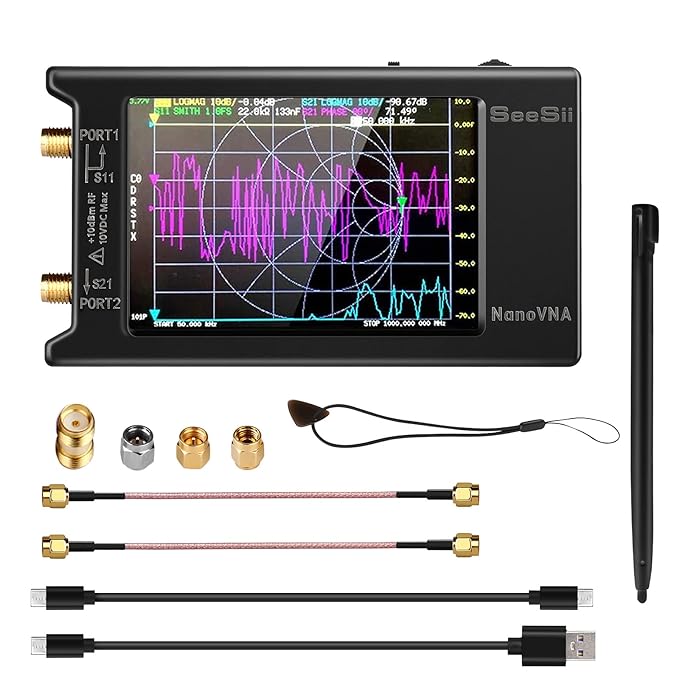Here’s a beginner’s guide to using a Nano VNA (Vector Network Analyzer):
What is a Nano VNA?
A Nano VNA is a small, portable device that measures the electrical properties of circuits and antennas.
Basic Components:
- Display Screen
- Input/Output Ports (SMA or BNC)
- Menu Buttons
- Calibration Standards (short, open, load)
Step-by-Step Instructions:
- Calibration:
- Connect the calibration standards to the input port.
- Select “Calibration” from the menu.
- Follow on-screen instructions to calibrate the device.
- Measurement:
- Connect the circuit or antenna to the input port.
- Select the desired measurement type (e.g., S11, S21, etc.).
- Set the frequency range and resolution.
- Press “Start” to begin measurement.
- Interpreting Results:
- The display will show the measured data (e.g., impedance, reflection coefficient).
- Use the menu buttons to switch between different display formats (e.g., Smith chart, graph).
Tips for Beginners:
- Start with simple measurements (e.g., S11) to get familiar with the device.
- Use the calibration standards to ensure accurate measurements.
- Understand the basics of electrical circuits and antenna theory.
- Practice, practice, practice!
Common Measurements:
- S11: Reflection coefficient (impedance matching)
- S21: Transmission coefficient (gain/loss)
- Smith Chart: Visualize impedance and admittance
Remember: The Nano VNA is a powerful tool. Take your time to learn and experiment with different measurements and settings. Happy measuring!

